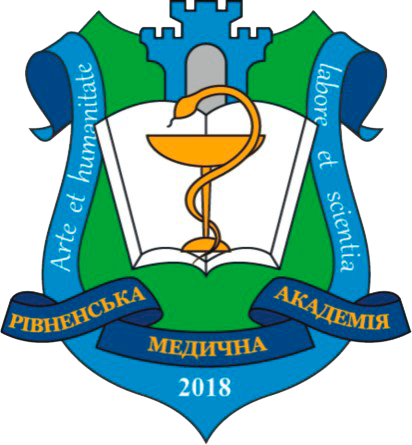FRACTAL-PERCOLATION MODRLING OF THE STRUCTURE OF PRESSED LISINOPRIL TABLETS
DOI:
https://doi.org/10.32782/health-2024.3.6Keywords:
pressed tablets, lisinopril-astrapharm, cluster and percolation models, fractal formalismAbstract
In the article, the processes of structure formation of pressed lisinopril tablets are analyzed from the standpoint of the fractal-percolation approach. The possibility of using the percolation cluster model to estimate the structural parameters of pressed pharmaceutical preparations is shown. In the analysis of pressing processes and formation of the structure of the quasi-equilibrium state of tablets, fluctuating free volume, intermolecular frameworks, order parameters in dissipative structures, mechanical properties, modeling within the framework of fractal formalism is used. The parameters of the percolation model and fractal formalism were determined on the basis of experimental ultrasound studies of pressed tablets. The postulates of the percolation theory were used, with the possibility of analyzing critical phenomena in topologically heterogeneous systems with disordered elements and evaluating the internal relationship between physical, mechanical and geometric (structural) parameters of disordered systems, which are pressed tablets. The percolation analysis of the pressed composite structure was carried out according to the theory of flow along tangential spheres. The structure of the pressed tablet was considered based on the cluster model (order-transition region-disorder). The cluster in this model with its resulting chains is similar to the well-known cluster in the Witten-Sander (WS) model. These structural formations were characterized by critical percolation indices. The short-range order regions in the compressed tablet and the transients form the framework of the percolation cluster, and such a subset is described by the critical percolation index β. Another subset in the structural organization consists of disordered regions characterized by a critical percolation index v0 . At a critical content of constituent particles of the tablet, they form endless chains connected by elements and a framework. Their behavior is described by critical indices γ, t. Critical percolation indices were determined by the values of the fractal dimension of structural formations of pressed tablets. It was believed that the fluctuating free volume is concentrated in the regions of disorder and transients, which makes it possible to consider them as fractals, the dimension of which coincides with the dimension of the regions of "excess" energy localization. This dimension characterizes the degree of excitation of disordered regions in the cluster model. The value of this parameter indicates the formation of the fluctuation volume in all areas of the simulated structure of the pressed tablet. Such processes in the change of structural formations are confirmed by the analysis of the size distribution of microcavities in the free volume. The subjects of the study were dosage forms in the form of pressed tablets of lisinopril-astrafarm (pharmacotherapeutic group of ACE inhibitors) with different content of the active substance. Determination of such characteristics of pressed pharmaceutical preparations allows to predict their behavior under the conditions of formation and action of external factors.
References
Вельчинська О. В., Ніженковська І. В. Сучасні дефініції стандартизації лікарських засобів. Health & Education. 2024. Вип. 2. С. 125–131.
Чебанов В. А. Хімічні дослідження для вітчизняної фармації як складова національної безпеки. Вісн. НАН України. 2022. № 9. С. 15–21.
Бордюк М. А., Шевчук Т. М., Крівцов В. В., Мащенко В. А. Ультразвукові дослідження пресованих таблеток лізоноприл. Health & Education. 2023. Вип. 3. С. 54–62.
Shevchuk T.M., Bordyuk M.A., Krivtsov V.V., Mashchenko V.A. Fractal Percolation Approach in Determining Structured and Mechanical Properties of Polyurethane Auxetics. Metallophysics and Advanced Technologies. 2020. V. 42. № 9. Р. 1293–1302.
Mygal V.P., Mygal G.V. Topological 3D Model of the Functioning of a Dynamic System Cognitive Estimation of Complexity J. Nano- Electron. Phys. 2010. Том 13. № 4, 04023(6cc).
Donets S.Ye., Lytvynenko V.V., Startsev O.V., Lonin Yu.F., Ponomarev A.G., Uvarov V.T. Fractal analysis of fractograms of alluminum alloys irradiated with high current electron beam. Physics and Chemistry of Solid State. 2023. Vol. 24. № 2. Р. 249–255.
Забашта Ю. Ф., Ковальчук В. І., Булавiн Л. А. Кiнетика фазового переходу в змінному температурному полі. Укр. фiз. журн. 2021. Т. 66, № 11. С. 976–980.
Janssen H., Stenull O. Scaling Exponents for a Monkey on a Tree: Fractal Dimensions of Randomly Branched Polymers.2012. Physical Review E, 85(5), 051126(15рр).
Shevchuk Т. М., Bordyuk М. А., Krivtsov V. V., ets. Viscoelastic Properties of Filled Polyurethane Auxetics. Physics and Chemistry of Solid State. 2021. Vol. 22. № 2. Р. 328–335.
Shevchuk Т. М., Bordyuk М. А., Mashchenko V. A., ets. Percolation characteristics of filled polyurethane auxetics. Physics and Chemistry of Solid State.2022. Vol. 23. № 3. Р. 590–596.
Шевчук Т. М., Бордюк М. А., Крівцов В. В., Мащенко В. А. Фрактально-перколяційне моделювання структурної організації наповненого полівінілхлориду. Полімерний журнал. 2019. Т.41, № 2. C. 109–115.
Шевчук Т. М., Бордюк М. А. Фрактальність та параметр Грюнайзена полімерних систем з від’ємним коефіцієнтом Пуассона. Фізика і хімія твердого тіла. 2016. Т. 17. № 4. С. 476–481.





